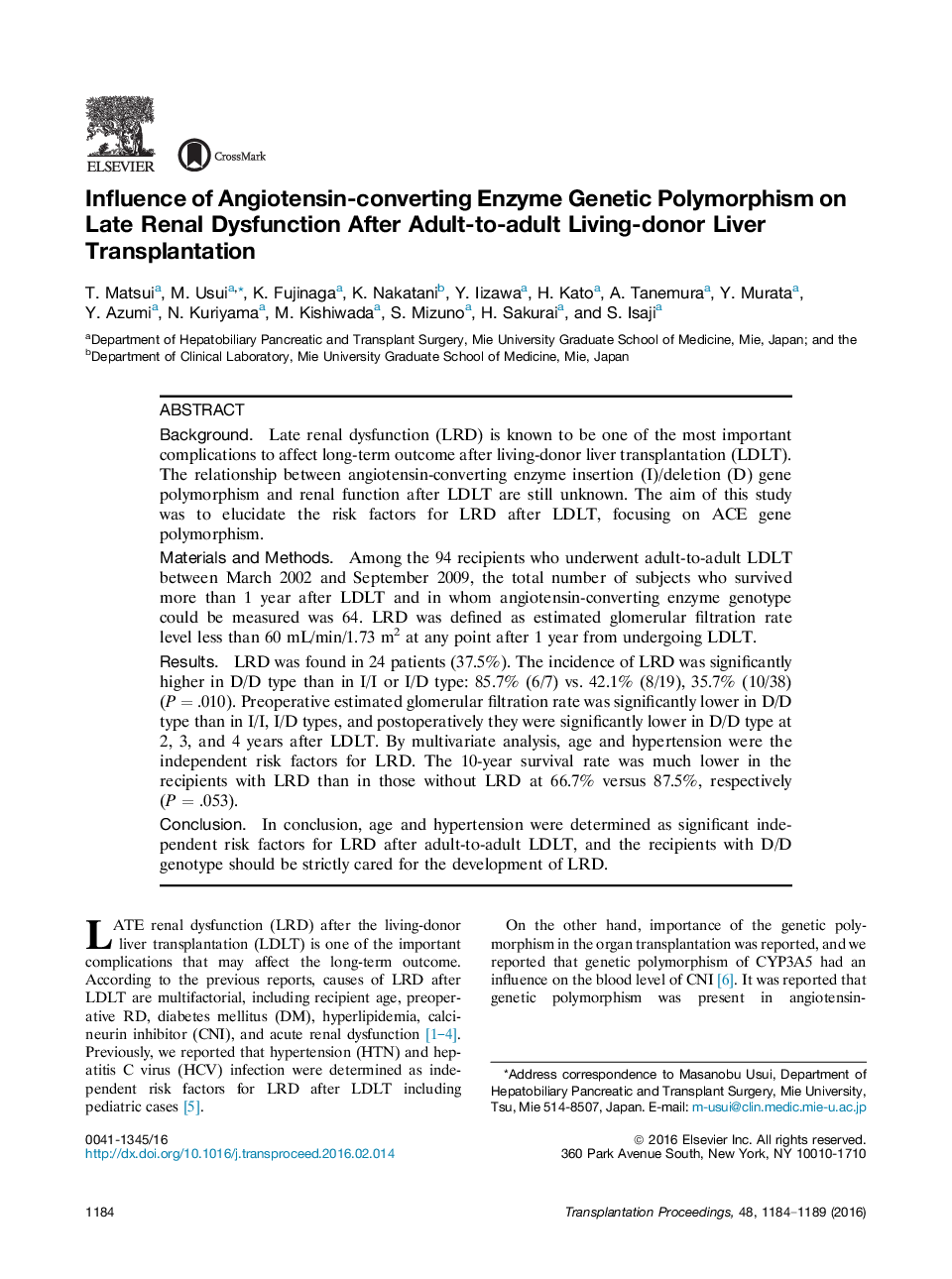| کد مقاله | کد نشریه | سال انتشار | مقاله انگلیسی | نسخه تمام متن |
|---|---|---|---|---|
| 4255986 | 1284506 | 2016 | 6 صفحه PDF | دانلود رایگان |
• Late renal dysfunction was found in 24 patients (37.5%) after living-donor liver transplantation.
• The recipients with angiotensin-converting enzyme deletion/deletion genotype should be strictly cared for the development of late renal dysfunction.
• Age and hypertension were determined as significant independent risk factors for late renal dysfunction after adult-to-adult living-donor liver transplantation.
BackgroundLate renal dysfunction (LRD) is known to be one of the most important complications to affect long-term outcome after living-donor liver transplantation (LDLT). The relationship between angiotensin-converting enzyme insertion (I)/deletion (D) gene polymorphism and renal function after LDLT are still unknown. The aim of this study was to elucidate the risk factors for LRD after LDLT, focusing on ACE gene polymorphism.Materials and MethodsAmong the 94 recipients who underwent adult-to-adult LDLT between March 2002 and September 2009, the total number of subjects who survived more than 1 year after LDLT and in whom angiotensin-converting enzyme genotype could be measured was 64. LRD was defined as estimated glomerular filtration rate level less than 60 mL/min/1.73 m2 at any point after 1 year from undergoing LDLT.ResultsLRD was found in 24 patients (37.5%). The incidence of LRD was significantly higher in D/D type than in I/I or I/D type: 85.7% (6/7) vs. 42.1% (8/19), 35.7% (10/38) (P = .010). Preoperative estimated glomerular filtration rate was significantly lower in D/D type than in I/I, I/D types, and postoperatively they were significantly lower in D/D type at 2, 3, and 4 years after LDLT. By multivariate analysis, age and hypertension were the independent risk factors for LRD. The 10-year survival rate was much lower in the recipients with LRD than in those without LRD at 66.7% versus 87.5%, respectively (P = .053).ConclusionIn conclusion, age and hypertension were determined as significant independent risk factors for LRD after adult-to-adult LDLT, and the recipients with D/D genotype should be strictly cared for the development of LRD.
Journal: Transplantation Proceedings - Volume 48, Issue 4, May 2016, Pages 1184–1189
